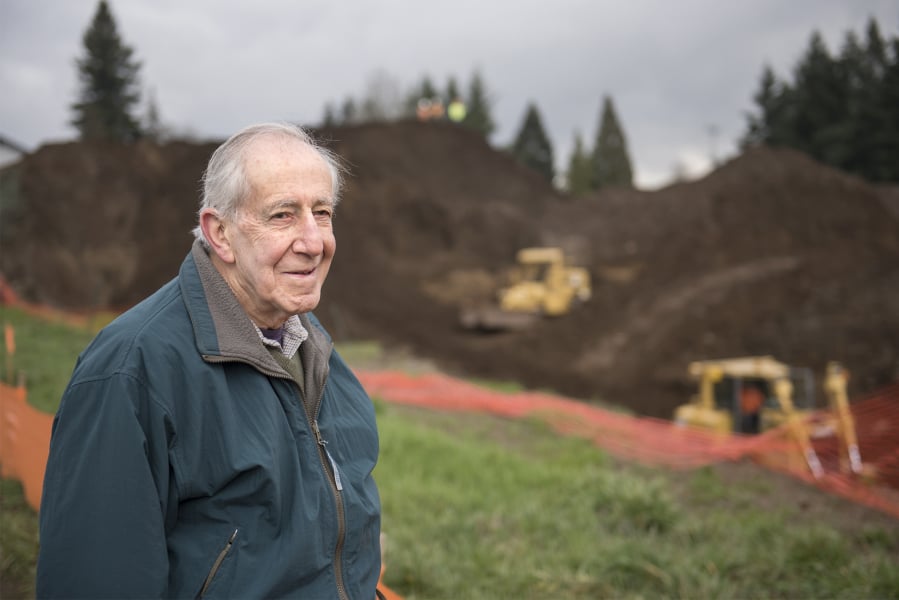I’ll be honest: the story of the hole is not that interesting. It’s actually a construction site, where Ginn Development plans to build a 78-townhouse subdivision, Ginn Group spokeswoman Deanna Haake said.
As they started to dig, they discovered debris that appeared to be from road construction. They don’t know where it’s from, and Clark County and the Washington State Department of Transportation doesn’t, either. You’re not exactly supposed to chuck construction debris into a nearby field.
Crews are grading the ground right now, moving dirt. So there’s a big hole in the ground.
Construction on the homes is slated to start in May with completion in August.
I met Levi at the hole a little more than a week ago to share my findings, as straightforward as they were. He was genial and seemed interested in what was going on. He told me he drives past the hole almost every day on the way “to go to the shops.”
What caught my attention, apart from the size of the hole — it is pretty massive — was Levi’s lilting voice. He had a British-sounding accent, prompting me to ask him where he was from. He smiled.
“It’s been a long time,” he said.
Levi relocated to the United States as a refugee from modern-day Zimbabwe about 40 years ago, he told me. The region was in the height of the Rhodesian Bush War in the years leading up to ousted-President Robert Mugabe’s dictatorship over the country.
Facing conscription in the military and fearing death or severe injury, Levi and his family fled. Levi, his wife and two sons landed first in Salem, Ore., in 1979. They had $400.
“It was pretty rough,” he said.
Levi worked on his sponsor’s wheat and grass seed farm. They spent two years in La Grande, Ore., and finally landed in Vancouver, where they’ve been since 1981.
Meanwhile, Levi’s home country has deteriorated. A 2018 Bloomberg Businessweek article describes the country as having one of the world’s most “unstable economies.” Production of key crops declined by more than half from 1999 to 2005, and vast hyperinflation has rendered the country’s currency essentially worthless.
“They were the bread basket of south Africa, and today they depend on others to supply them food,” Levi said.
The 78 new townhomes in Hazel Dell are just one of the many harbingers of growth here in Clark County, which has consistently been one of the fastest-growing counties in Washington. I asked Levi what he thought of that, given his origins.
“It’s just amazing, the change,” he said. “The (Interstate 205) bridge wasn’t open when we got here. There was nothing east of 205. There was that Fred Meyer and then nothing.”
One of the joys of journalism is that, even in a story about something as boring as a construction site, there’s almost always some fascinating character or new thing to learn along the way. I said as much to Levi.
“You’re more interesting than the hole,” I told Levi.
He only gave me a wry smile.
“It’s a long time ago, and forgotten,” he said.




